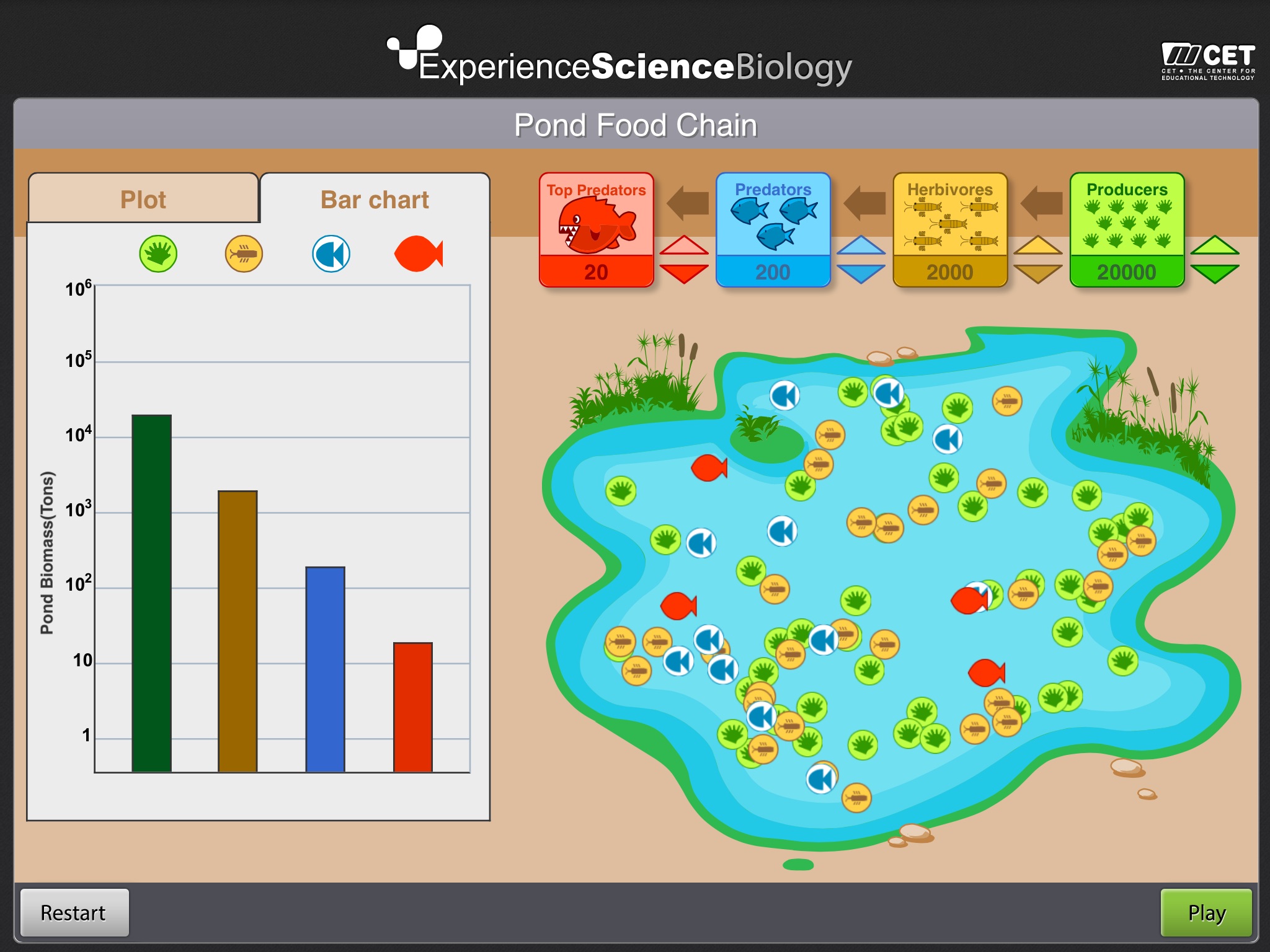
Experience Biology app for iPhone and iPad
Developer: C.E.T - THE CENTER FOR EDUCATIONAL TECHNOLOGY
First release : 04 Feb 2014
App size: 18.38 Mb
EXPERIENCE BIOLOGY invites students to investigate basic scientific phenomena and concepts in biology through simulations and interactive labs. Using an inquiry-based learning approach, the apps challenge middle-school students with investigations and quizzes based on the students explorations of each interactive unit.
EXPERIENCE BIOLOGY PROVIDES APPS WITH
• Dynamic simulations of scientific phenomena and concepts
• Scientific background relating to the phenomenon and concepts
• Multiple representations through dynamic graphs, tables, and interactive animations
• Investigations based on interesting inquiry questions
• Thought-provoking quizzes
• Activities appropriate for individual learning, small-group work, and teacher-led class instruction
EXAMPLES OF EXPERIENCE BIOLOGY UNITS:
POND FOOD CHAIN investigates a simple food chain consisting of producers, herbivores, predators, and top predators. Students understand basic concepts relating to an ecological system by changing population sizes, running the simulation, recording the results, and drawing conclusions. How can changing the population size of one species influence the population sizes of the other species in the same food chain?
THE BODY AS A SYSTEM explores the physiological responses of walking or running on a treadmill. Students can change the velocity of the treadmill and observe the corresponding changes in the runners heart rate, respiration rate, body temperature, oxygen consumption, and blushing. What changes occur in our bodies when we increase our rate of walking and running?
CELLULAR RESPIRATION examines how the digestive, respiratory, and circulatory systems work together in the process that provides energy to the bodys cells. How do the molecules that interact within the cells in this process (the reactants) reach the cells? What happens to the molecules that result from this process (the products)?
JOURNEY TO BIOLOGICAL LEVELS OF ORGANIZATION explores biological levels of organization, from the biosphere to atoms, in three ecosystems: the Mediterranean Scrubland, the African Savannah and the Coral Reef. What patterns can you notice as you move up an ecosystem, level by level?
INHERITANCE OF A SINGLE TRAIT investigates how traits are transmitted from one generation to the next, using the dominant-recessive pattern of inheritance. The simulation invites students to conduct genetic crosses of plants with different traits, in order to solve five genetic challenges.
PHOTOSYNTHESIS invites students to investigate how light intensity and carbon dioxide levels affect the photosynthesis rate, by manipulating these variables under different conditions, graphing the results, and drawing conclusions. What are limiting factors and what role do they play in photosynthesis?
THE BEATING HEART examines how blood flows from the body to the heart, lungs and back to the body. The simulation invites students to investigate how the heart works. What is the effect of different levels of physical activity on the heart rate?



